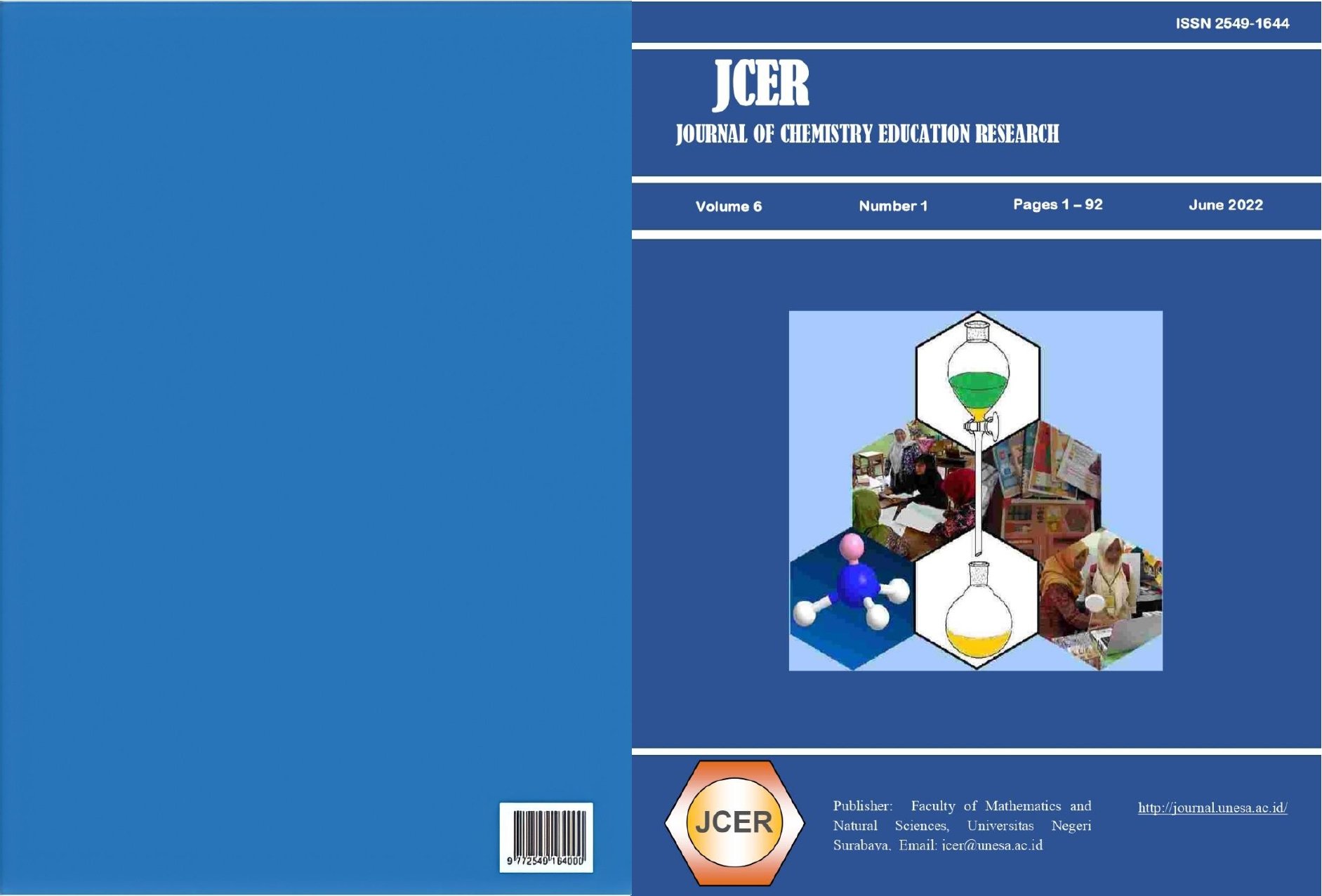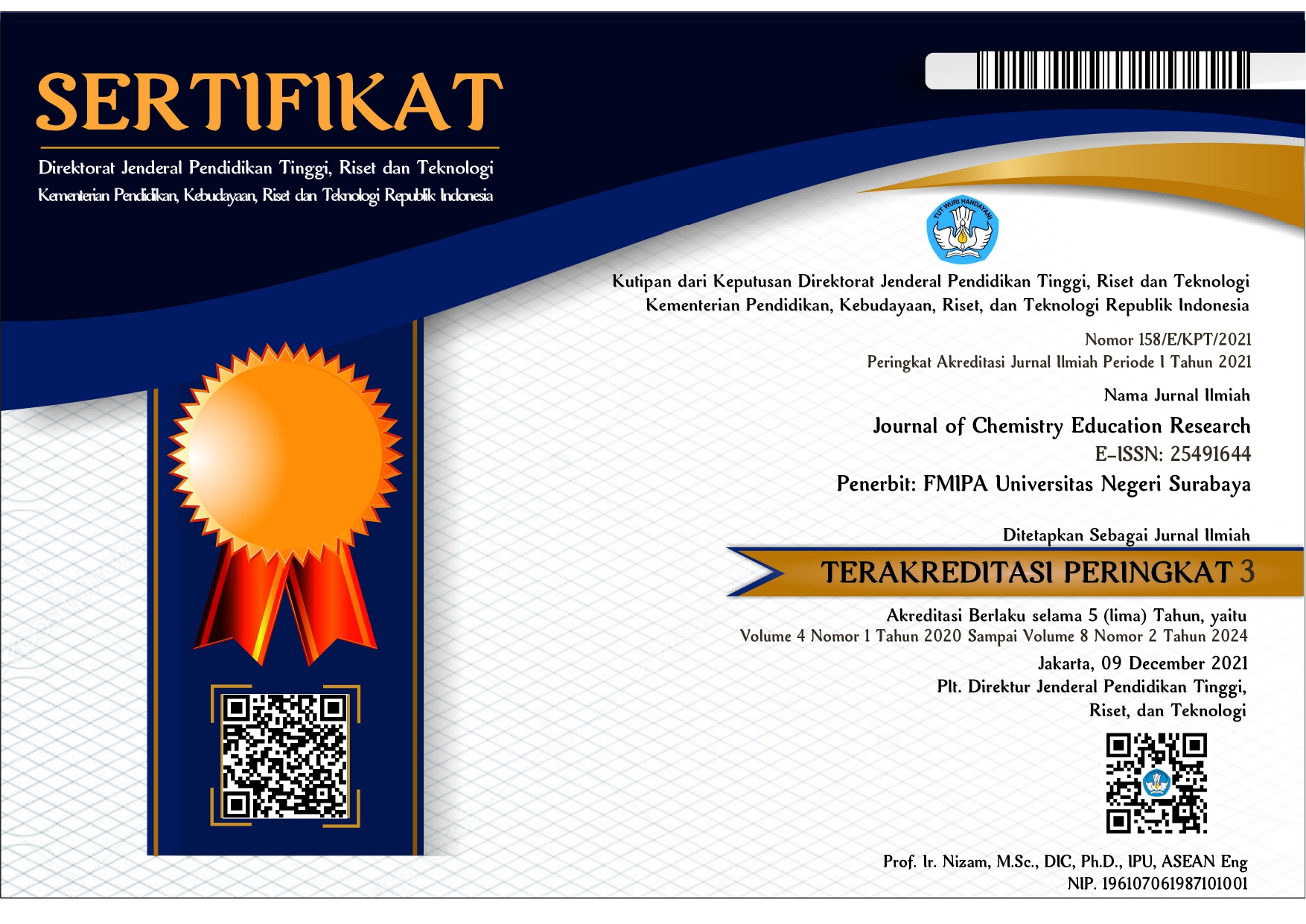DEVELOPMENT OF ASSEMBLR EDU-ASSISTED AUGMENTED REALITY LEARNING MEDIA ON THE TOPIC OF EFFECT OF REACTANT’S CONCENTRATION AND CATALYST ON REACTION RATE
PENGEMBANGAN MEDIA PEMBELAJARAN AUGMENTED REALITY BERBANTUAN ASSEMBLR EDU PADA SUBTOPIK PENGARUH KONSENTRASI REAKTAN DAN KATALIS TERHADAP LAJU REAKSI
DOI:
https://doi.org/10.26740/jcer.v6n1.p58-71Keywords:
Augmented Reality, Assemblr Edu, Catalyst, Reaction RateAbstract
The level of submicroscopic representation can be cause of difficulty in learning chemistry, so that interest and understanding of chemistry concept is low. In overcoming this, innovative learning media are needed that are able to visualize and make it easier to understand abstract concepts, especially on the subtopic of the effect of reactant’s concentration and catalyst on the chemical rate reactions. This research aims to create product in the form of Augmented Reality assisted by Assemblr Edu that is valid, effective, and practical. This study is Research and Development that uses ADDIE development model and involves 10 prospective chemistry teacher students. Research instruments include validation sheets, test items, and response questionnaire. Data were analyzed using Aiken's V and descriptive statistic. The results showed that: (1) product have fulfilled very valid criteria with average percentage of 92% with aspect of product presentation and use are 92% (very valid), content aspect of 94% (very valid); language aspect by 92% (very valid); (2)average test score of respondents after using the product is 70 which indicates that product is classified as effective; and (3)average response to the product is 90% indicating that the product is very good and classified as very practical. The product is feasible to use and can support the mastery of technology-based concept, especially in the subtopic of the effect of reactant’s concentration and catalyst on chemical rate reactions.
References
Ramadani, R., Ramlawati, R., & Arsyad, M. (2020). Pengembangan Modul Pembelajaran Kimia Berbasis Augmented Reality. Chemistry Education Review (CER), 3(2), 152. https://doi.org/10.26858/cer.v3i2.13766
Lee, W. W., & Owens, D. L. (2004). Multimedia Based Instructional Design. Pfeiffer.
Creswell, J. W. (2012). Educational Research: Planning, Conducting, and Evaluating Quantitative and Qualitative Research (4th ed.). Pearson.
} Riduwan. (2009). Belajar Mudah Penelitian untuk Guru-Karyawan dan Peneliti Pemula. Alfabeta.
Huda, A. (2010). Efektifitas Pemanfaatan Media Presentasi Pada Mata pelajaran Pendidikan Agama Islam ( Studi Kasus di MAN 04 Model Pondok Pinang Jakarta Selatan ). Pendidikan Agama Islam UIN Syarif Hidayatullah, 90.
Downloads
Published
Issue
Section
License

This work is licensed under a Creative Commons Attribution-NonCommercial 4.0 International License.
 Abstract views: 2017
,
Abstract views: 2017
, PDF Downloads: 2181
PDF Downloads: 2181



